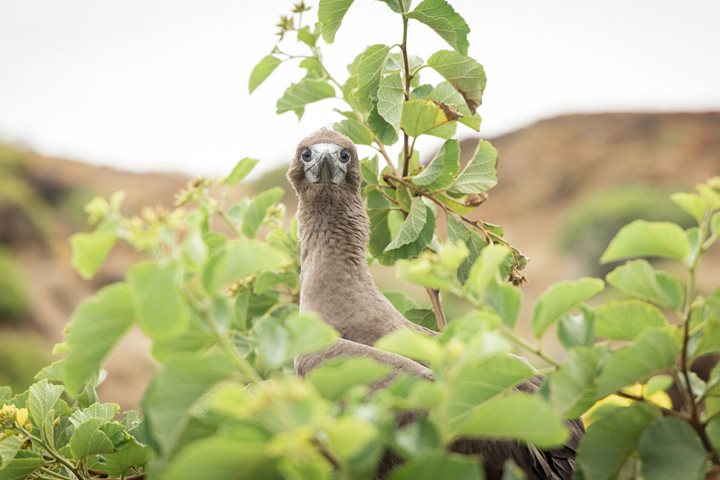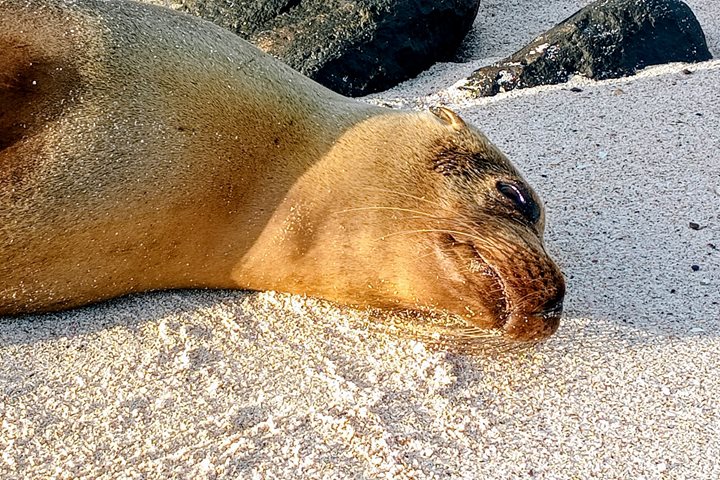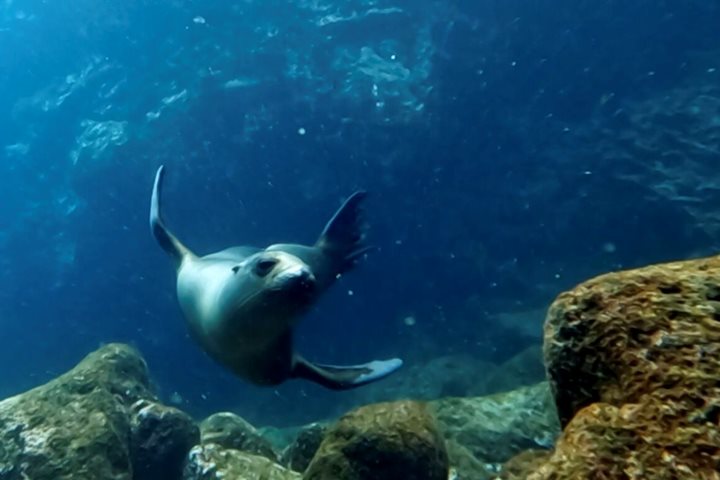Galapagos is an archipelago full of surprises because the animals can be observed so closely that we can be part of their world. They surprise us with new behaviors to thrive in this inhospitable ecosystem, where only the most adaptable creatures survive.
In the morning we visited Gardner Bay, with its magical turquoise waters and white sandy beach covered by colonies of Galapagos sea lions. Some of our guests chose kayaking for exercise and to enjoy the beautiful solitude that this place offers. I led a photography walk along the beach to practice all the photo tips and techniques for better pictures of landscapes and wildlife. The beach was amazing: the light, the scenario, the blue sky, and the animals. Also, our wellness specialist Juliana conducted a yoga session and stretching class. Then we came back to National Geographic Islander II to have breakfast and prepare for the second part of the morning.
Afterwards we went to explore the marine world around Gardner Islet. The experience was spectacular; we snorkeled with green pacific sea turtles, parrotfish, sea lions, and a beautiful seabed covered by sea urchins, sea cucumbers, conchs, sea stars, and coral reefs. We finished our morning having fun on the beach, where many curious sea lions and mockingbirds surrounded us to see what kind of creatures we are.
In the afternoon we took our Zodiacs for a ride along the coast of Punta Suarez. We spotted many seabirds such as blue-footed boobies, Nazca boobies, green and red marine iguanas, and pelicans. We also observed the majestic Galapagos waved albatross — this incredible bird is the best glider in the world, and is only found here. Española is home for about 25,000 albatrosses that arrive here each year to reproduce and feed their chicks; at the end of December, they migrate south of the Chilean coast along the Humboldt current.
Back on board our ship we navigated along the coast of Española to observe the incredible landscape, including a big blowhole near the coast that makes this place even more unique. At the end of the afternoon the sun came down, the sky turned orange and we celebrated our astonishing experiences in this enchanted archipelago.
- Daily Expedition Reports
- 30 Oct 2023
Española Island, 10/30/2023, National Geographic Islander II
- Aboard the National Geographic Islander II
- Galápagos







